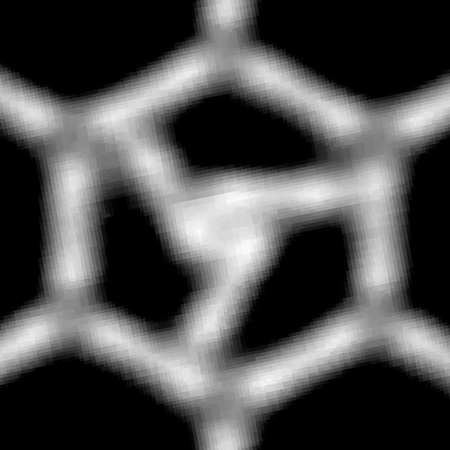Researcher Anatoly Kolomeisky, professor of chemistry at Rice University, provides a glimpse into the molecular world where atoms lower, sink and rise according to a set of laws that still await decipherment


Researcher Anatoly Kolomeisky, professor of chemistry at Rice University, provides a glimpse into the molecular world where atoms lower, dive and rise according to a set of laws that still await their decipherment.
The research team provides serious progress towards defining the behavior of these molecular "spindles" in a new article published in the scientific journal Journal of Physical Chemistry C. Based on molecular dynamics simulations, the researchers were able to characterize the laws underlying the rotational movement of molecules moving around a gold surface. This study follows other studies carried out at the same university in the field of "nano-vehicles". In their research, the team was able to decipher several key characteristics in the behavior of these tiny rotors, findings that could help in understanding the ways in which molecular machines work in the human body.
The movement they describe is found everywhere in nature, explains the lead researcher. The most obvious example to the eye is the rod of a bacterium, which uses a simple rotary movement for its movement. "When the rod rotates clockwise, the bacterium moves forward. When it rotates counter-clockwise they fall." At an even smaller level, ATP-synthase, which is an important enzyme in the transfer of energy to the cells of living systems, exhibits a similar rotational movement.
Understanding the ability to build and control molecular rotors will enable the development of several new and interesting materials that can be used in the field of nanomachines. The researchers envision the development of radio filters that would allow the passage of extremely narrow signals, depending on the frequency of the nanorotors. "The development of such a material will be very important, despite its high cost," notes the researcher. "However, if I can build hundreds of rotors that will move simultaneously with a signal from me, I will be very happy."
The basic model molecule includes a sulfur atom in the center, to which a pair of alkyl chains are attached, like wings, and which is able to rotate freely when heated. The sulfur atom anchors the molecule to the gold surface.
While working on previous research, the scientists envisioned photographic evidence of rotational motion of sulfur/alkyl molecules heated by a gold surface using tunneling microscope images. As the heating rate increased, the image changed from a line to a rectangle and then to a hexagon - changes that characterize movement. The image was unable to explain why this process was happening to him.
By examining computer simulations of a variety of theoretical configurations - some with symmetric, asymmetric chains and some with only one chain - the researchers were able to characterize a collection of interlocking properties that govern the behavior of single-molecule rotors.
First, the researcher explains, the symmetry and structure of the gold surface has a great influence on the rotor's ability to overcome the energy barrier that prevents it from rotating constantly. When both arms are close to the surface molecules, the barrier is large. However, when one of the arms is above a gap between the gold atoms, the barrier is significantly smaller.
Second, symmetrical rotors spin faster than asymmetrical rotors. The longer the chain between two asymmetrical arms, the more energy is required to move, and this property causes an imbalance. In symmetric rotors, the chains, like rigid wings, compensate each other as they plunge into the gap, while the others rise above the surface molecules. A third characteristic, the researcher points out, is the type of chemical bond between the atom anchored to the surface and the chains, a characteristic that determines the degree of freedom of the rotor to rotate. Finally, the chemical type of the rotating groups is also an important factor. The scientist notes that the research opens a window for simulations of more complex rotor molecules.

2 תגובות
Great, now they will build nano fans and then there will be nano cooling for the processor on computer D:
And this is how we will solve the problem of the dust that collects, accumulates and accumulates in my computer D: long live nano rotors D:
Cool, now it will be possible to build nano-helicopters! (in addition to nano submarines)